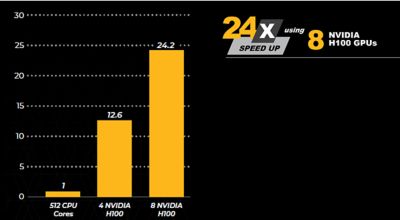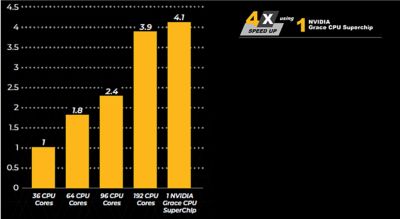-
United States -
United Kingdom -
India -
France -
Deutschland -
Italia -
日本 -
대한민국 -
中国 -
台灣
-
-
产品组合
查看所有产品Ansys致力于通过向学生提供免费的仿真工程软件来助力他们获得成功。
-

依靠仿真来加速电动汽车和自动驾驶汽车开发并提高安全性。
在企业竞相将更多电动汽车(EV)和自动驾驶汽车(AV)投放市场的过程中,缩短产品上市时间可以带来巨大的竞争优势,这意味着汽车工程师必须争分夺秒。
虽然依靠仿真来加速开发、优化周期并提高产品安全性已经不是新鲜事,但过去的单核计算环境已难以满足复杂EV和AV设计所需的大规模、硬件密集型计算模型。
在对数百万个场景中车辆组件的相互作用进行建模或开展高级驾驶辅助系统(ADAS)仿真时,传统的处理方法可能过于耗时。任何限制(无论是软件还是硬件方面)都有可能分散工程师对当前任务的注意力,因此,Ansys一直在探索如何为不同求解器提供最佳性价比的解决方案。通过与汽车软件和操作系统开发、人工智能(AI)计算和云解决方案领域的一些知名企业合作,Ansys已证明了其能够提供高置信度仿真,并且有时速度可比以往快达53倍。
突破界限
虽然电动汽车和内燃机(ICE)汽车都高度依赖软件,但电动车通常在软件定义功能方面更具突破性。
以电子控制单元(ECU)等任务关键型系统为例,由于这些设备负责管理发动机运行、安全措施、制动系统、无钥匙进入和驾驶舒适度,因此它们必须实时响应事件。这一要求,使得任务分配和同步成为了嵌入式软件工程师开发代码时的重要考虑因素。
此外,ECU还必须符合AUTOSAR标准,即汽车开放系统架构。AUTOSAR是由汽车制造商和软件公司组成的全球性开发合作组织,旨在为汽车ECU建立标准化的软件架构。
这些计算密集型挑战不仅需要更复杂的软件工程,而且解决过程本身就非常缓慢。Ansys与AUTOSAR专家Elektrobit合作提供了一种简化ECU开发的新方法。这种方法非常有效,在一个真实测试案例中,其成功将处理时间缩短了60%。
通过将Ansys SCADE嵌入式软件产品系列(可自动生成符合代码规范的软件)与Elektrobit tresos安全操作系统(确保符合AUTOSAR标准的软件堆栈)相结合,两家公司创建了一个使用多核环境生成和验证嵌入式软件内核的自动化流程。该方法可优化任务的同步和排序,生成经过验证的软件代码,并能以尽可能少的时间、资金和计算资源满足严格的AUTOSAR标准。
作为验证,Ansys与Elektrobit团队对电池管理系统(BMS)进行了测试。BMS对于确保电动汽车的安全运行至关重要,它们可监测和控制电池电压、温度和充电状态(SOC)等参数,以防止热失控、过度充电和其他潜在危险。
由于物理、化学和电气过程的复杂相互作用,BMS仿真极具挑战性。
在BMS测试案例中,在单个内核上进行计算所需的运行时间为4.64毫秒。然而,在多核环境中,相同的计算仅需1.9毫秒,相当于处理时间缩短了60%,这对于负担过重的软件工程团队来说是一项巨大的节省,也是加快产品上市进程的关键。
使用HPC集群
虽然合适的软件和多核环境可以帮助嵌入式软件工程师加速创新,但对于许多其他工程师来说,加快仿真速度的关键在于高性能计算(HPC)集群,即通过互连的计算机协同工作来解决单个问题。
HPC环境可以处理大量数据并高速执行复杂计算,这主要是通过将任务分布至整个处理器阵列进行并行处理来实现的。但即便具备这些优势,要满足汽车用例的需求,仍然需要大量的运行时间。此外,HPC集群通常成本高昂,而且更新换代很快。于是,出现了两种替代方案:采用图形处理单元(GPU)计算,或借助持续更新的云端资源来运行多个专用求解器。

正面偏置碰撞评估,是Ansys LS-DYNA非线性动力学结构仿真软件的常见应用之一。
使用GPU
GPU最初是为渲染图形而设计的,但其高度并行的架构和同时执行数千次独立计算的能力,使其适用于更广泛的应用,其中包括提高计算流体力学(CFD)仿真的吞吐量。
Ansys Fluent流体仿真软件在汽车设计中,被广泛应用于对流体现象进行建模和分析。Fluent CFD以其高效的HPC功能而著称,可扩展到数千个中央处理单元(CPU)内核进行计算。然而,为了确定最佳计算环境以加速求解器仿真,Ansys最近与NVIDIA和Supermicro一起开展了一项关于外部汽车空气动力学的基准研究。几家公司的研究结果表明,基于GPU的计算可以为CFD等复杂仿真带来显著的性能提升。
该仿真模型对汽车外部形状进行了非常详细的表示,使用了2.5亿个单独的网格单元来定义几何结构。这样的细节水平,对于准确捕获汽车周围复杂的流动模式至关重要,而这些流动模式会显著影响汽车的空气动力学性能。
当我们的HPC合作伙伴MVConcept使用四个NVIDIA H100 GPU运行大涡仿真(一种用于仿真湍流的CFD技术)时,与使用512个CPU内核时相比,仿真速度提高了12.6倍。而将GPU数量增加到八个后,求解时间缩短了近一半。仿真速度从12.6倍提高到24.2倍的线性趋势表明,增加更多GPU可以继续显著缩短求解时间;

而线性扩展意味着,当使用八个NVIDIA H100 GPU运行Ansys Fluent仿真时,相比使用四个NVIDIA H100 GPU,速度提升几乎翻倍(12.6倍到24.2倍)。
缩短求解时间
Ansys、NVIDIA和Supermicro还合作开展了一项基准测试研究,在配备NVIDIA Grace CPU超级芯片的Supermicro ARS-121LDNR计算环境中评估Ansys LS-DYNA非线性动力学结构仿真软件。
LS-DYNA软件是一款显式仿真应用,主要用于分析瞬时冲击,例如碰撞、跌落、爆炸和其他剧烈载荷事件。其可实现一些当今最大规模的仿真,利用由数百万个单元或节点组成的模型,对数百个虚拟测试场景进行评估。NVIDIA Grace CPU超级芯片是一种专为数据中心级计算而设计的新型处理器,与传统CPU相比,性能得到了显著提升。
这项研究通过重现虚拟正面汽车碰撞,来评估车辆撞击偏置可变形障碍物时的安全合规性。利用上述强大的软硬件组合,最终速度提高了4倍。

借助NVIDIA Grace CPU超级芯片,使用LS-DYNA软件的工程师可以大幅缩短求解时间,以评估更多碰撞场景,从而提高安全性,并减少物理测试的时间和费用。
凭借AI的速度进行预测
仿真还可用于提高AI训练的速度。AI训练的速度越快,仿真的速度和准确性就越高。Ansys AI产品包括Ansys SimAI平台和用于现有仿真产品的Ansys AI+附加模块。
将AI与仿真相结合后,通过利用早期设计阶段或前几代汽车所使用的CFD仿真,即使在几何结构不一致的情况下,也能将设计变更的空气动力性能预测速度提高10~100倍。
若将仿真软件、AI和HPC相结合,结果会更加令人印象深刻。在与NVIDIA和Supermicro联合开展的基准测试中,Ansys optiSLang AI+优化软件表现出了惊人的速度提升。通过使用从小型参数化设计研究(可能需要数天时间才能创建)中得出的仿真数据来训练optiSLang软件,可以在几分钟或几秒钟内运行使用不同变量的多个AI模型。其中,基准结果是使用HFSS软件,在12核CPU和8个GPU上对两个5G毫米波天线模块进行仿真,并计算生成80个设计点所需的时间而得出的。当使用optiSLang AI+模型计算生成相同数量的设计点所需的时间时,基准测试显示,其速度提升达到了惊人的1,600倍。
满足复杂性要求
提高性能至关重要,而超越竞争对手也是如此。但是,在进行深入的汽车产品研究时,固定的计算基础设施可能无法满足大型仿真的算力需求,又或者,需要数天、数周甚至数月才能获得高保真度结果。虽然有可升级的方案,但由于需要在成本和预算之间权衡,很多工程部门可能望而却步。
为了优化运行时间和成本,Ansys与云服务提供商亚马逊云科技(AWS)合作,推出由AWS云工程解决方案提供支持的Ansys Gateway,这是一个专为满足复杂仿真需求而构建的可扩展平台,具有即插即用的简便性。
借助由AWS解决方案提供支持的Ansys Gateway,产品开发团队可以在云端轻松高效地解决大型复杂问题。订阅用户可以以灵活、实惠的方式,访问最先进的软件(包括一些易于部署的预配置软件)和硬件,并可以从一系列可用的处理器类型、处理内核和节点配置中进行选择。由AWS解决方案提供支持的Ansys Gateway允许Ansys仿真软件在数千个计算机处理器上同时运行,从而显著加快了仿真速度,并且无需昂贵的硬件或增加成本。
为了确认由AWS解决方案提供支持的Ansys Gateway的有效性,Ansys使用LS-DYNA软件完成了两项研究。研究中,采用的是三车正面碰撞仿真模型,其中包含超过2000万个单元。Ansys发现,在使用云计算时,配置选择非常关键。与Amazon EC2 c6i.32xlarge和Amazon EC2 c5n.18xlarge实例类型相比,AWS的Amazon EC2 hpc6a.48xlarge实例类型能以更低的成本更快提供仿真结果。Ansys发现,通过优化云配置,用户可以用更少的资金将仿真运行速度提升最高达11倍。
由于Ansys软件与AWS云紧密集成,并在云端与其他仿真工作流程工具并行运行,工程师无需在平台之间来回切换,就能完成任务。因此,由AWS解决方案提供支持的Ansys Gateway不仅缩短了求解时间,还简化了作业提交、交接和其他流程步骤。
高效、强大且快速
利用GPU超级计算加速创新
最近,Ansys宣布了CFD仿真领域的又一个令人振奋的里程碑,该成果是与NVIDIA和德克萨斯高级计算中心(TACC)合作实现的。这项工作包括在TACC的Vista超级计算机上使用320个NVIDIA GH200 Grace Hopper超级芯片节点,来运行高度复杂的汽车外部空气动力学仿真。
此次仿真处理了一个包含24亿个单元的模型,取得了卓越的成果,其中包括:与基于传统CPU的方法相比,速度提高了110倍,其性能与225,000多个CPU内核相当。这一突破将仿真时间从近一个月缩短到仅6个多小时,重新定义了“隔夜完成”高保真度CFD分析的可能性,并有助于树立行业的新标准。
对于工程和产品开发人员来说,这一由GPU驱动的飞跃所带来的不仅仅是更快的结果,它还为之前难以想象的仿真规模和复杂性打开了大门,从而提供以前无法获得的洞察。
工程师们已意识到,仿真比构建物理原型更高效。但是,电动汽车和自动驾驶汽车等复杂车辆的仿真需要比其前代产品更多的计算资源。通过大幅缩短求解时间,Ansys使汽车工程师能够评估更多安全驾驶场景,同时减少物理测试的时间和费用。
了解更多
下载电子书“如何利用交钥匙硬件系统加速Ansys多物理场仿真”。
Advantage博客
Ansys Advantage博客(The Advantage Blog)由Ansys专家和其他技术专家撰写,让您随时了解Ansys如何为创新赋能,推动人类踏上伟大征程。













